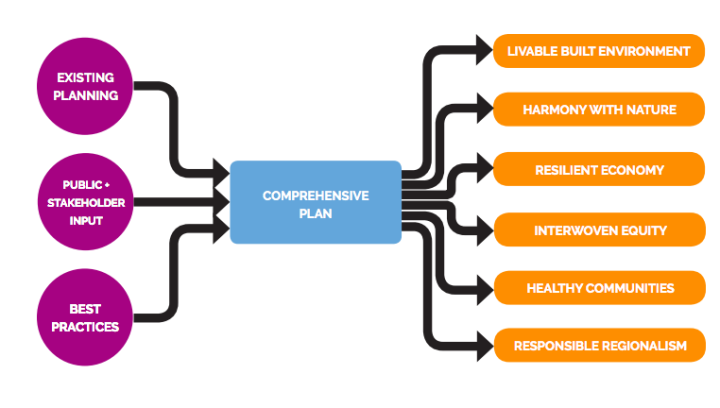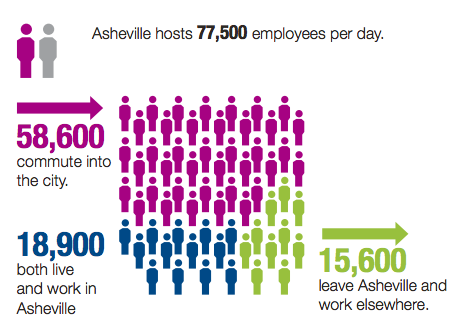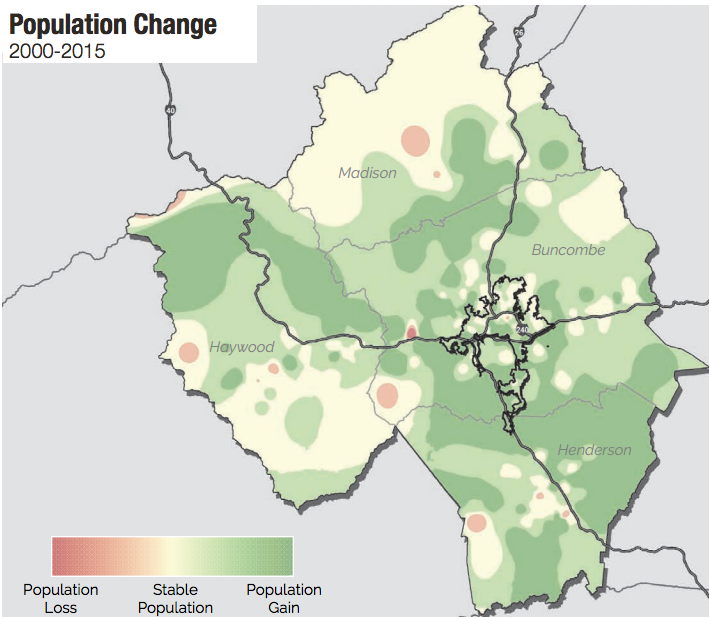Asheville City Council authorized a project to update the city’s comprehensive plan on April 26 last year. Since then, city staff, community members and consultants have been chipping away at the massive undertaking. At a June 27 work session, Council members heard an update on the draft version of the plan, which was released in June. According to Todd Okolichany, the city’s planning director, the planning team will submit the final version of the three-part, more-than-300-page document for Council approval in October.
The purpose of a comprehensive plan, Okolichany said, is to guide policymaking related to growth and development.

This update of the city’s long-range plan will replace the 2025 plan approved in 2003 under then-Mayor Charles Worley. New components of the draft plan include a focus on City Council’s expressed commitment to equity, increased attention to the city’s role in encouraging the development of affordable housing and the projected impact of climate change on the city, Okolichany told Council members.
Boosting community input into the planning process has been a key goal for the effort, Okolichany said. Of the city’s 68 neighborhoods, 32 submitted “Plan on a Page” documents outlining their concerns and priorities. The city has held a variety of workshops and informal chats to keep residents informed and to solicit their input. City planning staff has also provided updates on the planning process to a variety of committees and groups, including Council’s Planning and Economic Development Committee, the Planning and Zoning Commission, the Multimodal Transportation Commission, the Neighborhood Advisory Committee, the Sustainability Advisory Committee on Energy and the Environment and others.
The draft version of the plan was posted on the city’s Open City Hall online platform for community review and comments through July 6.
As a result of the city’s outreach activities, Okolichany said, over 13,000 residents have engaged in the planning process in some way. In an interview after the Council work session, Stacy Merten said the majority of those surveyed say the draft plan accurately reflects their input. A member of the city’s Planning Department, Merten is coordinating the comprehensive plan project.
Roger Weber, an urban planner with consulting firm SOM, outlined areas for growth in the city. The boundaries of the downtown area could expand, Weber said, and a third downtown zoning district with building height and size standards that differ from the existing two downtown districts could be considered. Other measures could include limiting surface parking lots, providing shuttle connections to parking areas outside downtown and encouraging infill development.

in Asheville but live elsewhere;
59,000 people who work in Asheville
live outside of Asheville, 76 percent of
Asheville’s workforce.” Graphic courtesy of the city of Asheville
Major transportation corridors such as Merrimon and Patton avenues and Hendersonville Road could be targeted for denser development, Weber continued. Concentrating traffic, transit and development along these routes could protect the character of established neighborhoods. Similarly, the city could encourage development in “community places” such as West Asheville’s Haywood Road, Tunnel Road, Patton Avenue and city-identified innovation districts to cluster new jobs in areas outside of downtown, he said. The city’s innovation districts include downtown, the River Arts District, Haywood Road and North Charlotte Street.
Future zoning initiatives could include expanding form-based zoning — which controls building sizes and forms rather than their uses — from Haywood Road and the River Arts District into other parts of the city. The emphasis should be on creating “a high-quality public realm,” Weber said.
Each of the 36 goals identified in the plan, Okolichany said, will have concrete strategies for implementation and monitoring. In response to a question from Council member Julie Mayfield, Okolichany clarified that not every strategy will end up being put to use and that funding for many of the strategies has not been identified. “None of these strategies will become policy without City Council action,” he said.
Vice Mayor Gwen Wisler noted that she hadn’t seen references to city boards and commissions in the draft plan. She also questioned whether education had received adequate attention. “We struggled with that topic,” responded Okolichany, noting that the city doesn’t have direct authority over education. “We looked at safe routes to schools, good sidewalks and the locations of schools,” he continued. “Also, we examined partnering opportunities with our anchor institutions like A-B Tech and UNC Asheville.”
“It’s a tough subject to tackle in a comprehensive plan,” added Weber. The plan draft examines education through the lens of jobs and workforce development, and the section on a healthy community also refers to K-12 education, he said.

Council member Cecil Bothwell asked transportation consultant Don Bryson of VHB how the plan accounts for a projected rise in autonomous vehicles and other transportation innovations. While predicting the future is notoriously difficult, Bryson said, transportation planners agree that providing safe routes for pedestrians and cyclists is critical. Though less parking will be required in the future, more curbside spaces for passenger pickup and drop-off will be necessary.
For clients building new parking decks, Bryson said, his firm is increasingly designing structures that can be repurposed for other uses when parking demand drops.
The city Planning Department, Merten said, will continue to receive and incorporate public input until the plan is finalized in early September.
For more information on the comprehensive plan, see “The Road Ahead: Asheville Launches Comprehensive Plan Update,” May 18, 2016, Xpress.



Before you comment
The comments section is here to provide a platform for civil dialogue on the issues we face together as a local community. Xpress is committed to offering this platform for all voices, but when the tone of the discussion gets nasty or strays off topic, we believe many people choose not to participate. Xpress editors are determined to moderate comments to ensure a constructive interchange is maintained. All comments judged not to be in keeping with the spirit of civil discourse will be removed and repeat violators will be banned. See here for our terms of service. Thank you for being part of this effort to promote respectful discussion.